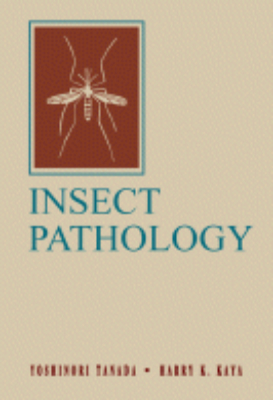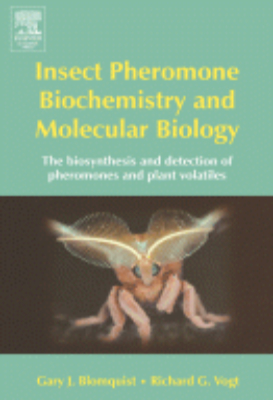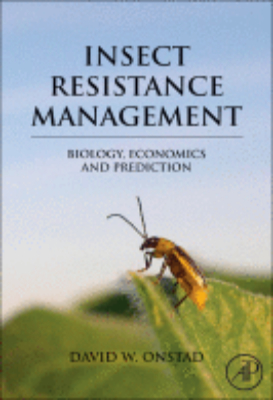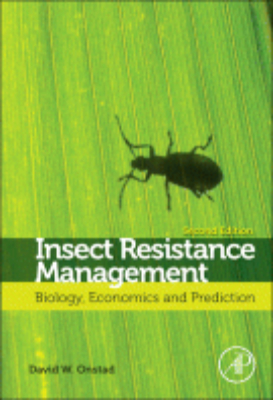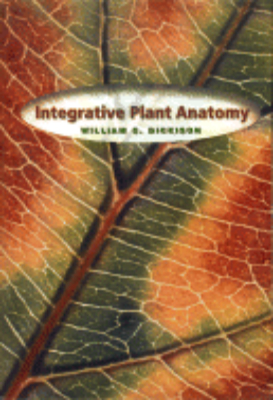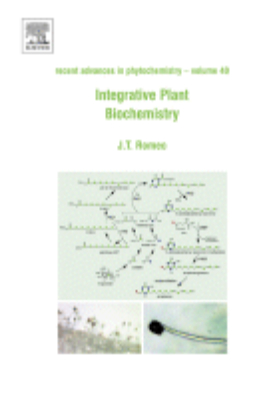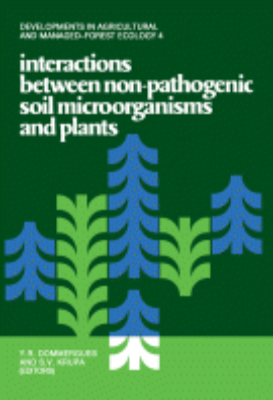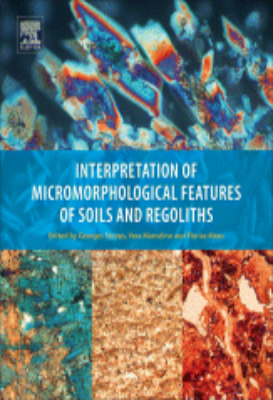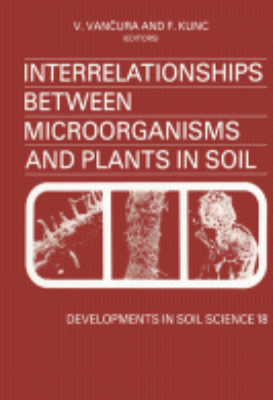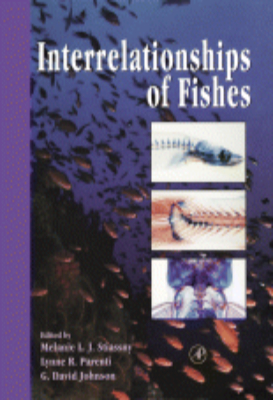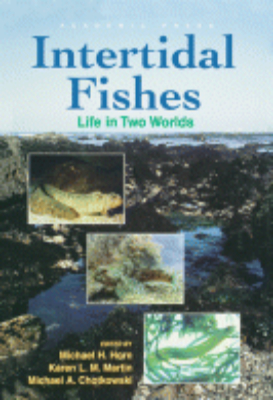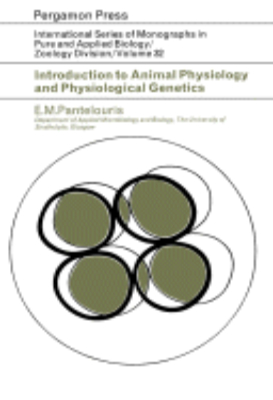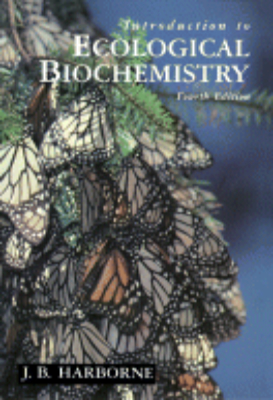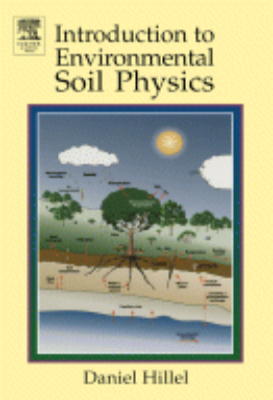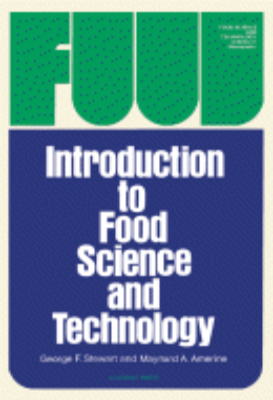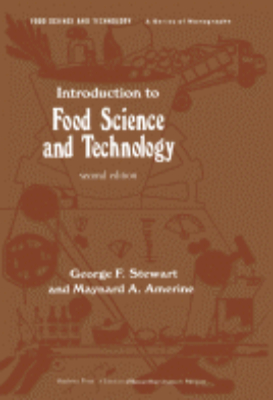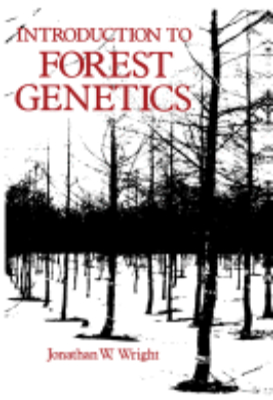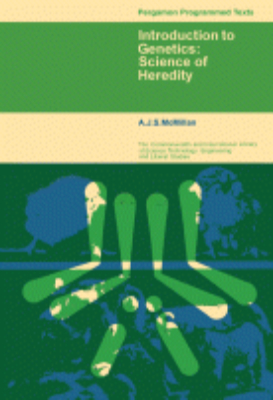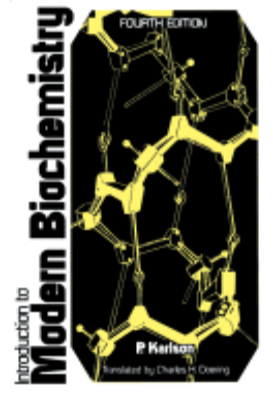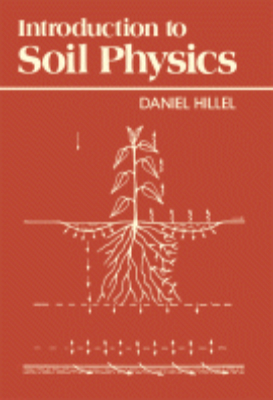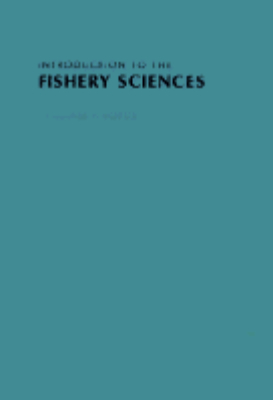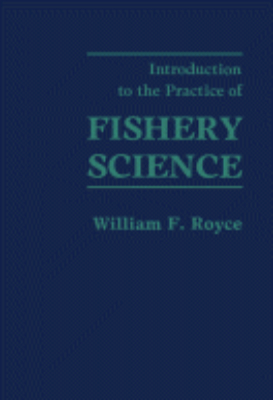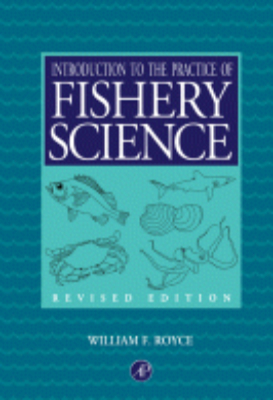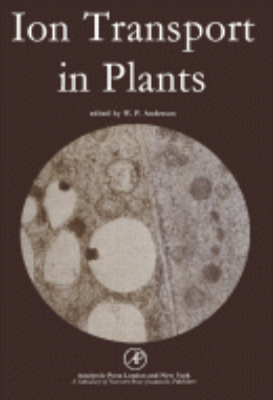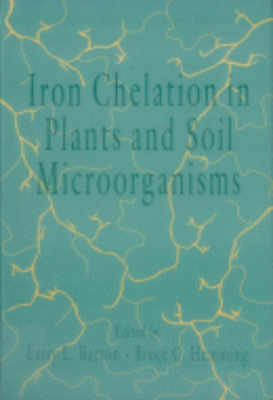ebooks
Insect Pathology
Insect Pathology is designed for a broad spectrum of readers. Is should be useful to students, lecturers, and researchers requiring information about the principles in insect pathology and the biology of pathogens. It should serve as a resource for specialists to learn about other insect pathogen systems, for generalists to become aware of advances in insect pathology, and for scientists and students, beginning or otherwise, interested in learning about insect pathology.. This book was originally intended to update the 1949 test by E. A. Steinhaus entitled Principles of Insect Pathology. The purpose for this book was twofold: To serve (1) as a text for an insect pathology and/or biological control class and (2) as a comprehensive reference source. Because this book summarizes much of the available information, its usefulness as a textbook for an insect pathology class is apparent. Although the literature citations are extensive, they are far from complete. The literature in insect pathology is voluminous and for the past decade has been expanding at an almost exponential rate. A complete review of the literature is beyond the scope of the book, and an omission of a reference does not preclude its importance. Our citations, however, should serve as a good starting point for those who wish to obtain further information. We have attempted to cover equally all subdisciplines, but shortcomings are unavoidable. For these, we take full responsibility.
Insect Pests of Potato
"Insect Pests of Potato: Biology and Management provides a comprehensive source of up-to-date scientific information on the biology and management of insects attacking potato crops, with an international and expert cast of contributors providing its contents. This book presents a complete review of the scientific literature from the considerable research effort over the last 15 years, providing the necessary background information to the subject of studying the biology management of insect pests of potatoes, assessment of recent scientific advances, and a list of further readings. This comprehensive review will be of great benefit to a variety of scientists involved in potato research and production, as well as to those facing similar issues in other crop systems. Key Features. Written by top experts in the field, this is the only publication covering the biology, ecology and management of all major potato pests. Emphasizes ecological and evolutionary approaches to pest management. Summarizes information from hard-to-get publications in China, India, and Russia"
Insect Pheromone Biochemistry and Molecular Biology
"A valuable new reference on insect behavior, this exceptional new text delves into the primary sensory communication system used by most insects -- their sense of smell. Insect Pheromone Biochemistry and Molecular Biology covers how insects produce pheromones and how they detect pheromones and plant volatiles. Since insects rely on pheromone detection for both feeding and breeding, a better understanding of insect olfaction and pheromone biosynthesis could help curb the behavior of pests without the use of harmful pesticides and even help to reduce the socio-economic impacts associated to human-insect interactions. Key Features. Covers biochemistry and molecular biology of insect pheromone production. Explains pheromone production in moths, beetles, flies, and social insects. Describes pheromone and plant volatile reception"
Insect Resistance Management: 2007
Insects, mites, and ticks have a long history of evolving resistance to pesticides, host-plant resistance, crop rotation, pathogens, and parasitoids. Insect resistance management (IRM) is the scientific approach to preventing or delaying pest evolution and its negative impacts on agriculture, public health, and veterinary issues. This book provides entomologists, pest management practitioners, developers of new technologies, and regulators with information about the many kinds of pest resistance including behavioral and phenological resistance. Abstract concepts and various case studies provide the reader with the biological and economic knowledge required to manage resistance. No other source has the breadth of coverage of this book: genomics to economics, transgenic insecticidal crops, insecticides, and other pest management tactics such as crop rotation. Dr. David W. Onstad and a team of experts illustrate how IRM becomes efficient, effective and socially acceptable when local, social and economic aspects of the system are considered. Historical lessons are highlighted with new perspectives emphasized, so that future research and management may be informed by past experience, but not constrained by it.
Insect Resistance Management: 2014
"Neither pest management nor resistance management can occur with only an understanding of pest biology. For years, entomologists have understood, with their use of economic thresholds, that at least a minimal use of economics was necessary for proper integrated pest management. IRM is even more complicated and dependent on understanding and using socioeconomic factors. The new edition of Insect Resistance Management addresses these issues and much more. Many new ideas, facts and case studies have been developed since the previous edition of Insect Resistance Management published. With a new chapter focusing on Resistance Mechanisms Related to Plant-incorporated Toxins and heavily expanded revisions of several existing chapters, this new volume will be an invaluable resource for IRM researchers, practitioners, professors and advanced students. Authors in this edition include professors at major universities, leaders in the chemical and seed industry, evolutionary biologists and active IRM practitioners. This revision also contains more information about IRM outside North America, and a modeling chapter contains a large new section on uncertainty analysis, a subject recently emphasized by the U.S. Environmental Protection Agency. The final chapter contains a section on insecticidal seed treatments. No other book has the breadth of coverage of Insect Resistance Management, 2e. It not only covers molecular to economic issues, but also transgenic crops, seed treatments and other pest management tactics such as crop rotation. Major themes continuing from the first edition include the importance of using IRM in the integrated pest management paradigm, the need to study and account for pest behavior, and the influence of human behavior and decision making in IRM. Key Features. Provides insights from the history of insect resistance management (IRM) to the latest science. Includes contributions from experts on ecological aspects of IRM, molecular and population genetics, economics, and IRM social issues. Offers biochemistry and molecular genetics of insecticides presented with an emphasis on recent research. Encourages scientists and stakeholders to implement and coordinate strategies based on local social conditions"
Integrated Pest Management
"Integrated Pest Management: Current Concepts and Ecological Perspective presents an overview of alternative measures to traditional pest management practices using biological control and biotechnology. The removal of some highly effective broad-spectrum chemicals, caused by concerns over environmental health and public safety, has resulted in the development of alternative, reduced risk crop protection products. These products, less toxic to the environment and easily integrated into biological control systems, target specific life stages or pest species. Predation recognized as a suitable, long-term strategy effectively suppresses pests in biotechnological control systems. Integrated Pest Management covers these topics and more. It explores the current ecological approaches in alternative solutions, such as biological control agents, parasites and predators, pathogenic microorganisms, pheromones and natural products as well as ecological approaches for managing invasive pests, rats, suppression of weeds, safety of pollinators, role of taxonomy and remote sensing in IPM and future projections of IPM. This book is a useful resource to entomologists, agronomists, horticulturists, and environmental scientists. Key Features. Fills a gap in the literature by providing critical analysis of different management strategies that have a bearing on agriculture, sustainability and environmental protection. Synthesizes research and practice on integrated pest management. Emphasizes an overview of management strategies, with critical evaluation of each in the larger context of ecologically based pest management"
Integrative Plant Anatomy
"From this modern and profusely illustrated book, the reader will learn not just the basics, which are amply reviewed, but also how plant anatomy is integrated with a wide variety of other disciplines, such as plant breeding, forensic analysis, medicine, food science, wood and fiber products, and the arts. The author presents the basic concepts and terminology of plant anatomy with a special emphasis on its significance and applications to other disciplines, and addresses the central role of anatomy by consolidating previously scattered information into a single volume. Integrative Plant Anatomy highlights the important contribution made by studying anatomy to the solutions of a number of present and future problems. It succeeds in integrating diverse areas of botany, as well as the non-biological sciences, the arts, and numerous other fields of human endeavor. Key Features. Presents both the classical and modern approaches to the subject. Teaches the importance of the subject to other disciplines such as the nonbiological sciences, the arts, and other fields of human endeavor. Written and organized to be useful to students and instructors, but also to be accessible and appealing to a general audience. Bridges the gap between conventional textbooks and comprehensive reference works. Includes key terms and extensive additional readings. Richly illustrated with line drawings and photographs"
Interpretation of Micromorphological Features of Soils and Regoliths
Interpretation of Micromorphological Features of Soils and Regolith, 2nd edition, provides researchers and students with a global tool for interpretation of micromorphological features of regoliths and soils. After an introduction and general overview by the editors, micromorphological aspects of regoliths (e.g. saprolites, unconsolidated sediments, transported materials) are highlighted, followed by a systematic and coherent discussion of the micromorphological expression of various pedogenic processes. This is done by discussing diagnostic horizons, materials and processes. The following topics are also treated: freeze-thaw features, redoximorphic features, calcareous and gypsiferous formations, textural features, spodic and oxic horizons, andic and volcanic materials, organic and surface horizons, laterites, surface crusts, salts, biogenic and inorganic siliceous materials, authigenic silicates, phosphates, thionic and derived materials, and features related to faunal activity. The last chapters address the impact of anthropic activities, with regard to archaeology and palaeopedology. Interpretation of Micromorphological Features of Soils and Regolith, 2nd edition, is written by a team of well-known, global experts in the field who all used a single set of concepts and terminology, making it a valuable interdisciplinary reference.
Interrelationships of Fishes
"Comprising by far the largest and most diverse group of vertebrates, fishes occupy a broad swathe of habitats ranging from the deepest ocean abyss to the highest mountain lakes. Such incredible ecological diversity and the resultant variety in lifestyle, anatomy, physiology and behavior, make unraveling the evolutionary history of fishes a daunting task. The successor of a classic volume by the same title, Interrelationships of Fishes, provides the latest in the ""state of the art"" of systematics and classification for many of the major groups of fishes. In providing a sound phylogenetic framework from leading authorities in the field, this book is an indispensable reference for a broad range of biologists, especially students of fish behavior, anatomy, physiology, molecular biology, genetics and ecology--in fact, anyone who wishes to interpret their work on fishes in an evolutionary context. Key Features. Provides thorough and comprehensive treatment of the Phylogency of fishes. Assembles an International team of expert contributors. Useful to a wide variety of fish biologists"
Intertidal Fishes
"Intertidal Fishes describes the fishes inhabiting the narrow strip of habitat between the high and low tide marks along the rocky coastlines of the world. It analyzes the specialized traits of these fishes that have adapted to living in the dynamic and challenging space where they are alternately exposed to the air and submerged in water with the ebb and flow of the tides. This book provides a comprehensive account of fishes largely overlooked in many previous studies of intertidal organisms and emphasizes how they differ from fishes living in other deeper-water habitats. Coverage includes air breathing, movements and homing, sensory systems, spawning and parental care, feeding habits, community structure, systematic relationships, distribution patterns, and the fossil record in the intertidal zone. Key Features. Written by an international team of 21 experts on intertidal fish biology. Worldwide coverage of intertidal fishes. Comprehensive phylogenetic listing of all fish families with intertidal members. Global biogeographic analysis involving over 700 species from 86 sites. Outlines field and laboratory methods pertinent to studying intertidal fishes. Thorough ecological coverage with chapters on vertical distribution, movements and homing, reproduction, feeding, and community structure. Covers the physiology of aerial and aquatic respiration, osmoregulation, and sensory systems"
Introduction to Animal Physiology and Physiological Genetics
Introduction to Animal Physiology and Physiological Genetics, deals with topics on physiological measurement, comparisons, and analysis of the role of genotypes. This book emphasizes two aspects the changes of physiological patterns in the course of development and the wide variation that can be found within a species. The text discusses the response mechanisms of living organisms from nerve impulses, chemical sense, muscle reaction, and includes some studies made on brain function. The effects of nutrition and energy such as the intake of food, water, oxygen, and the calculation of basic metabolic rates are explained. The book then discusses the role of the internal environment and that of the interstitial body fluid in the higher animals. The discussion covers blood circulation, cardiac cycle, and a special section on the function of the heartbeat in the spider Limulus showing that stimulation of the abdominal ganglia increases the heartbeats. The text also considers significant concepts of physiological genetics, and then explains asexual and sexual reproduction, the sex hormones of invertebrates, and the use of stimulants for animal production. The physiological differences between species are examined, but more particularly on the reservoir of genetic diversity, where differences abound between families and offspring. One research made in molecular biology concludes that genes are responsible for regulating the amino acid sequence of proteins. Molecular biologists, general biologists, zoologists, and microbiologists will find the articles in this collection invaluable.
Introduction to Ecological Biochemistry
"Ecological biochemistry concerns the biochemistry of interactions between animals, plants and the environment, and includes such diverse subjects as plant adaptations to soil pollutants and the effects of plant toxins on herbivores. The intriguing dependence of the Monarch butterfly on its host plants is chosen as an example of plant-animal coevolution in action. The ability to isolate trace amounts of a substance from plant tissues has led to a wealth of new research, and the fourth edition of this well-known text has consequently been extensively revised. New sections have been provided on the cost of chemical defence and on the release of predator-attracting volatiles from plants. New information has been included on cyanogenesis, the protective role of tannins in plants and the phenomenon of induced defence in plant leaves following herbivory. Advanced level students and research workers aloke will find much of value in this comprehensive text, written by an acknowledged expert on this fascinating subject. Key Features. The book covers the biochemistry of interactions between animals, plants and the environment, and includes such diverse subjects as plant adaptations to soil pollutants and the effects of plant toxins on herbivores. The intriguing dependence of the Monarch butterfly on its host plants is chosen as an example of plant-animal coevolution in action. New sections have been added on the cost of chemical defence and on the release of predators attracting volatiles from plants. New information has been included on cyanogenesis, the protective role of tannins in plants and the phenomenon of induced defence in plant leaves following herbivory"
Introduction to Environmental Soil Physics
An abridged, student-oriented edition of Hillel's earlier published Environmental Soil Physics, Introduction to Environmental Soil Physics is a more succinct elucidation of the physical principles and processes governing the behavior of soil and the vital role it plays in both natural and managed ecosystems. The textbook is self-contained and self-explanatory, with numerous illustrations and sample problems. Based on sound fundamental theory, the textbook leads to a practical consideration of soil as a living system in nature and illustrates the influences of human activity upon soil structure and function. Students, as well as other readers, will better understand the importance of soils and the pivotal possition they occupy with respect to careful and knowledgeable conservation.
Introduction to Food Science and Technology: 1973
Introduction to Food Science and Technology focuses on the importance of food science and food technology to humans. This book discusses the total sequence of operations in food technology, which includes the selection of raw materials, processing, preservation, and distribution. Comprised of nine chapters, this monograph starts with an overview of the processing and storage of food. This book examines how the food processor often controls the producers operations by demanding a raw product of a certain type in order to satisfy a particular processing and consumer demand. Other chapters consider the primary concern of food scientists and technologists in the processing and preservation of raw agricultural products as nutritious and stable foods of acceptable quality. The final chapter deals with the variety of jobs available for those trained in the biological, physical, and behavioral sciences and their applications to food processing and food preservation. Food technologists, chemists, and scientists will find this book extremely useful.
Introduction to Food Science and Technology: 1982 Second Edition
The Second Edition of this popular textbook has benefited from several years of exposure to both teachers and students. Based on their own experiences as well as those of others, the authors have reorganized, added, and updated this work to meet the needs of the current curriculum. As with the first edition the goal is to introduce the beginning student to the field of food science and technology. Thus, the book discusses briefly the complex of basic sciences fundamental to food processing and preservation as well as the application of these sciences to the technology of providing the consumer with food products that are at once appealing to the eye, pleasing to the palate, and nutritious to the human organism. Introduction to Food Science and Technology is set in the world in which it operates; it contains discussions of historical development, the current world food situation, the safety regulations and laws that circumscribe the field, and the careers that it offers.
Introduction to Forest and Shade Tree Insects
This comprehenisive text approaches the subject from an ecological/evolutionary biological perspective. The assumption is that one cannot study forest insects without understanding the dynamics of the relationship between an insect and its host plant. This relationship includes knowing what factors control forest insect populations such as food, food quality, tree vigor, host selection, and symbiotic relationships. The authors also discuss tree-injuring insects from the perspective of their influence on tree physiology and growth as well as economic and commercial effects. The book represents a "modern" approach to the topic of forest and shade tree insects; is well-illustrated; and includes a comprehensive primary reference list.
Introduction to Forest Genetics
Introduction to Forest Genetics examines some of the basic genetic concepts typically used in forestry and tree improvement studies, including Mendelian and population genetics. It also describes techniques that are generally useful in tree improvement work, including individual tree selection and breeding, provenance testing, species and racial hybridization, and introduction of exotics. Organized into 19 chapters, this volume begins with an overview of forest genetics and problems associated with forest genetics. It then discusses concepts from basic genetics, including chromosome structure and function; DNA and RNA; nongenetic inheritance; and genotype versus phenotype. Other chapters focus on inbreeding: complete elimination of homozygous recessive trees; mutation and migration; and controlled pollination and vegetative propagation. The book also covers the establishment and measurement of test plantations; general principles and methods of selective breeding; choice of breeding method and type of seed orchard; heritability and genetic gain; geographic variation in Scotch pine and American trees; species and racial hybridization; chromosome studies; and polyploidy and haploidy breeding. This book is a valuable resource for foresters, professional tree breeders, and those with or without previous training in genetics or forestry.
Introduction to Genetics
Introduction to Genetics: Science of Heredity presents a linear programmed text about hereditary and genetics. This book discusses a variety of topics related to heredity and genetics, including chromosomes, genes, Mendelism, mitosis, and meiosis. Organized into six chapters, this book begins with an overview of some of the experiments that first provide an understanding of heredity and laid the foundation of the science of genetics. This text then provides detailed information about the cell and explains how the essential parts of it reproduce and divide. Other chapters consider how the chromosome theory can explain not only the facts of Mendelism, but also the many complications that arise in genetics. This book discusses as well the problems that can happen during the process of mitosis and meiosis. The final chapter deals with the practical problems that confront the plant breeder. This book is a valuable resource for teachers and students of biology.
Introduction to Laboratory Animal Science and Technology
Introduction to Laboratory Animal Science and Technology discusses the principles involved in the healthy maintenance of animals in the laboratory or animal house. This book is divided into eight six units of study of the physical requirements of animals, physiological data, and techniques of husbandry, followed by summary data capsules and recommended further reading. After an overview of the laboratory animals, this book goes on dealing with various aspects of animal care, including their accommodation, health care routine, and animal health and hygiene. The next chapters examine the components of animal diet, the biological aspects of animal reproduction, breeding and heredity. The final chapter emphasizes the legal requirements concerning anesthesia, laboratory procedures, and the issue of euthanasia. This book will prove useful to laboratory technicians, students, students, researchers, and the general public who are concerned for animals and their use in laboratory work.
Introduction to Modern Biochemistry: Fourth Edition 1975
Introduction to Modern Biochemistry, Fourth Edition provides an understanding of the chemical background of biological phenomena. This book discusses the concepts of generation and utilization of free energy. Organized into 23 chapters, this edition starts with an overview of the important role of amides in biochemistry. This text then explores the chemical structure of proteins and describes the methods of determining the amino acids sequence of proteins. Other chapters consider the role of genes in protein and enzyme synthesis. This book discusses as well the significance of the submicroscopic structure of the cell in biochemical reactions. The reader is also introduced to the chemistry of the carbohydrates. The final chapter deals with biochemical functions of various organs, including the digestive tract, liver, kidney, nervous system, muscles, and connective tissues. This book is a valuable resource for biologists, biochemists, scientists, researchers, and readers who are interested in the field of biochemistry.
Introduction to Modern Biochemistry: Second Edition 1965
Introduction to Modern Biochemistry, Second Edition focuses on the methodologies, processes, reactions, and technologies involved in biochemistry. The publication first takes a look at organic chemistry and biochemistry, amino acids, and peptides. Discussions focus on the determination of amino acid sequence in peptides, naturally occurring peptides, chemical properties, separation of amino acids, hydrocarbons as parent substances, functional groups, polymeric compounds, and reactions with biochemical significance. The text then ponders on proteins, enzymes and biocatalysis, and coenzymes. The manuscript examines nucleic acids and protein biosynthesis, metabolism of proteins, and porphyrins and hemins. Topics include chemical constitution of heme, significance and reactions of blood pigment, metabolism of aromatic amino acids, degradation to activated fatty acids, decarboxylation of amino acids, and biosynthesis and degradation of nucleotides. The text also ponders on carbon dioxide formation in the citrate cycle, fats and fat metabolism, and phosphatides, cerebrosides, and gangliosides. The book is a valuable reference for biochemists and researchers interested in the processes, approaches, and technologies involved in biochemistry.
Introduction to Soil Physics
This book is a unified, condensed, and simplified version of the recently issued twin volumes, Fundamentals of Soil Physics and Applications of Soil Physics. Nonessential topics and complexities have been deleted, and little prior knowledge of the subject is assumed. An effort has been made to provide an elementary, readable, and self-sustaining description of the soil's physical properties and of the manner in which these properties govern the processes taking place in the field. Consideration is given to the ways in which the soil's processes can be influenced, for better or for worse, by man. Sample problems are provided in an attempt to illustrate how the abstract principles embodied in mathematical equations can be applied in practice. The author hope that the present version will be more accessible to students than its precursors and that it might serve to arouse their interest in the vital science of soil physics.
Introduction to the Fishery Sciences
Introduction to the Fishery Sciences provides a broad introduction into the study of aquatic organisms and ecology of fisheries and some of the legal, social, and political aspects of their use. The book is intended to be used by students and those who want to broaden their knowledge on the science of fishery. The text provides discussions on a wide range of topics such as trends in foodfish production; managing of fishery aquatic environment; identification and classification of fishery resources; and fishery resource management. Limnologists, freshwater biologists, ecologists, fisheries managers, and students in fisheries science will find the book a good reference material.
Introduction to the Practice of Fishery Science: 1984
Introduction to the Practice of Fishery Science covers the role of fishery science in various social affairs. This book is divided into three parts encompassing 15 chapters. Part I is about the profession, what is embodied in a professional career and the expanding challenges to the profession, with a summary of the work of organizations that employ fishery scientists. Part II deals with the traditional sciences that apply to the aquatic environment and its organisms. This part also tackles their biology, ecology, populations, and culture. Part III presents an overall qualitative concept of the activity of fishery scientists. This part also provides a perspective on fishery problems in several major areas and the ways in which the many kinds of scientists are attacking them. This book will prove useful to fishery scientists, researchers, and students.
Introduction to the Practice of Fishery Science: 1996
Revised and updated, Royce'sIntroduction to the Practice of Fishery Scienceis a classic text. With a new chapter onaquaculture, this book provides the background for a first course in fishery science. Intentionally focused on the practical and professional requirements of careers in the management and maintenance of fisheries, this text will be useful to students as well as to established professionals.
Ion Transport in Plants
Ion Transport in Plants covers knowledge about ion transport in plants. The book discusses ultrastructural localization; formalism and membrane models; and membrane resistance and H+ fluxes. The text also describes + fluxes in cells and organelles; Na+-+ transport and ionic relations of the halophytes; and Cl- transport in vesicles. The ion transport in roots and the symplasm is also considered. Botanists, biochemists and biologists will find the book invaluable.
Iron Chelation in Plants and Soil Microorganisms
Iron Chelation in Plants and Soil Microorganisms provides an introduction to the basic biological processes of plants that require iron and those affected by iron deficiency. The book aims to stimulate research in the area of iron metabolism in plants and plant-associated microorganisms. The book is organized into three parts. Part I provides an overview of research methods used in the study of iron chelation relevant to plant biology. Key topics covered include microbial siderophores, phytosiderophores, and plant and microbial ferritins. Part II discusses the molecular approach to iron chelation, which includes molecular biology, enzymology, and iron uptake activities. Part III addresses various physiological and chemical characteristics of the iron stress response. This book was written for scientists involved in plant physiology, agronomy, phytopathology, plant control, and soil microbiology. It may also be of interest to those studying soil chemistry, plant-mineral relationships, horticulture, in vivo and in vitro iron measurements, and microbial ecology. In addition, the book can serve as reference for specialty courses and laboratories conducting research on iron nutrition in plants as well as individuals engaged in iron-related research.

